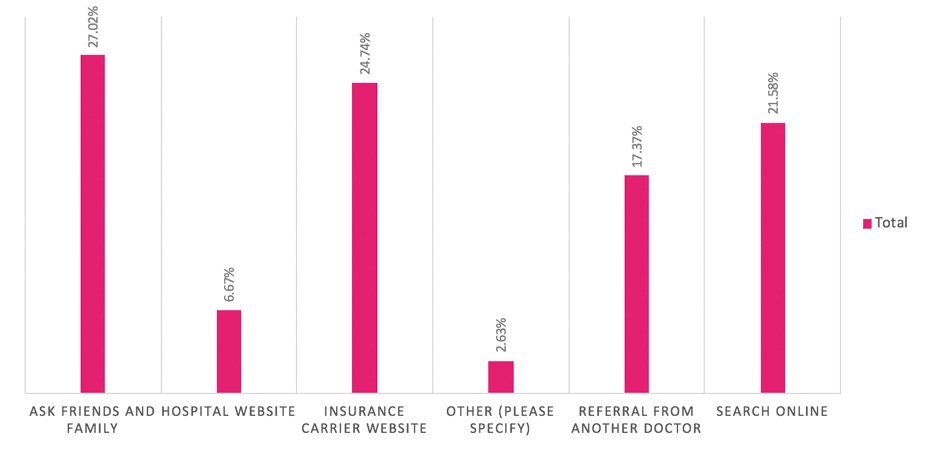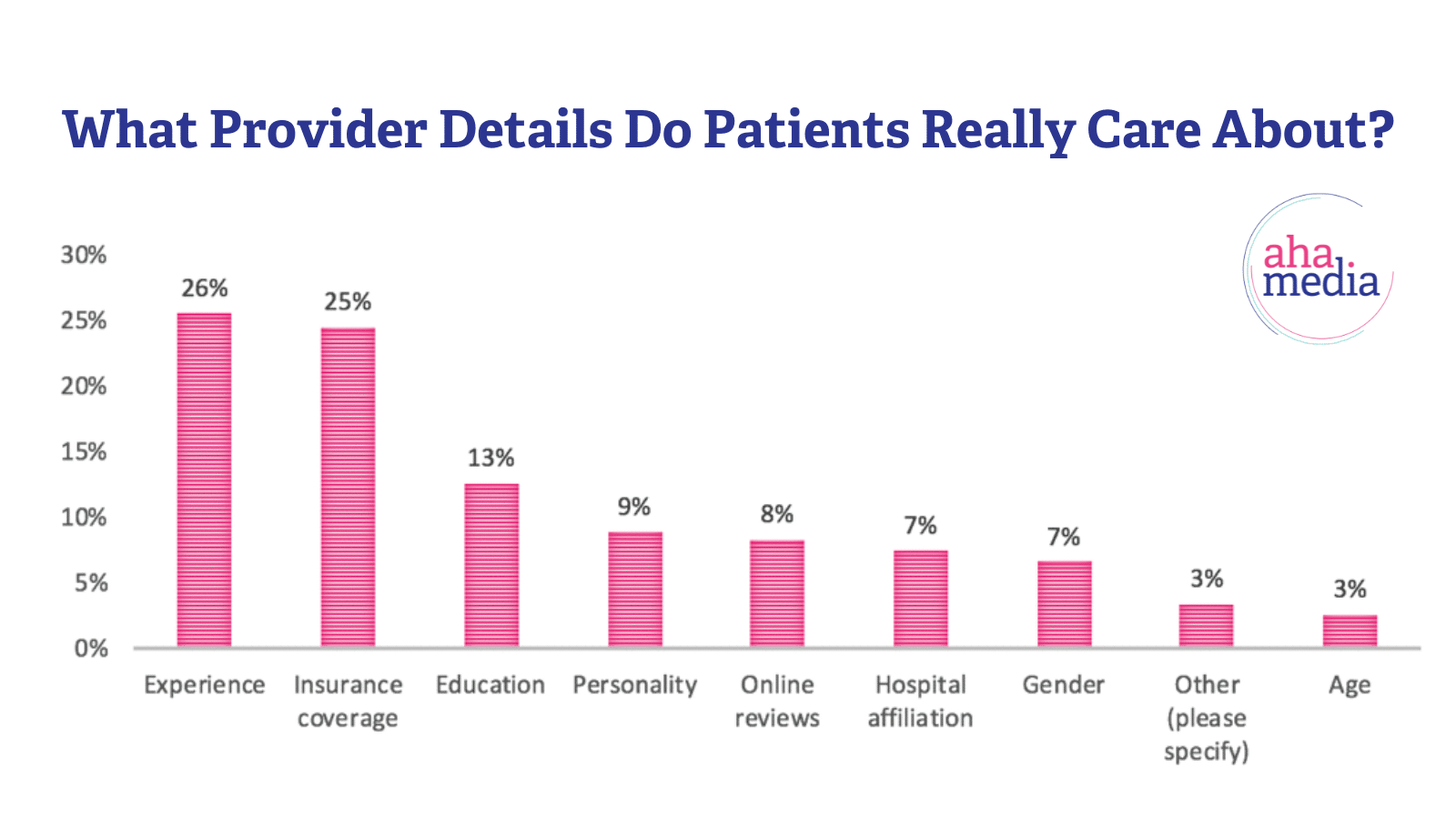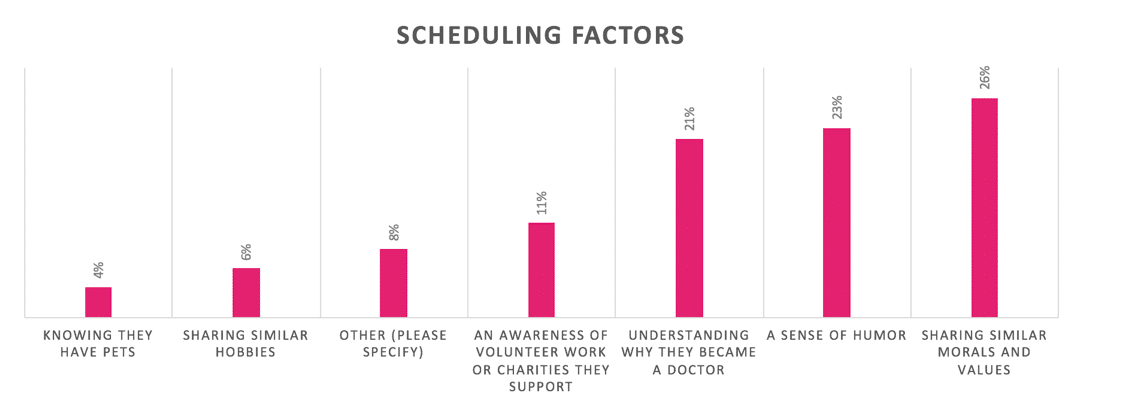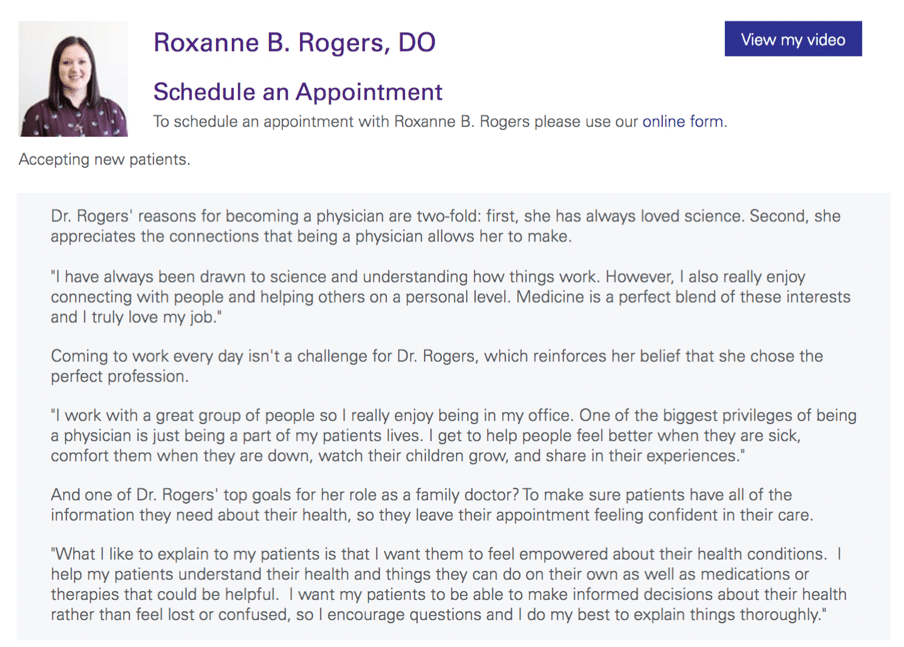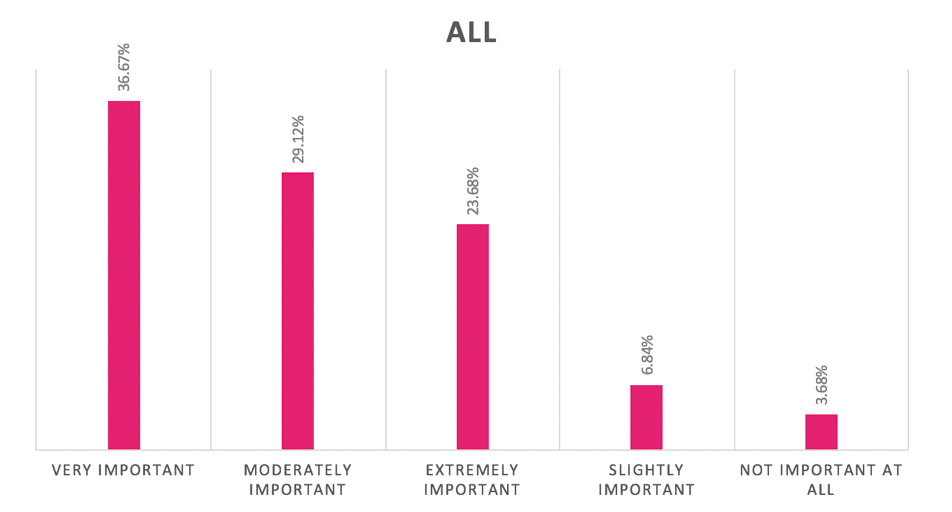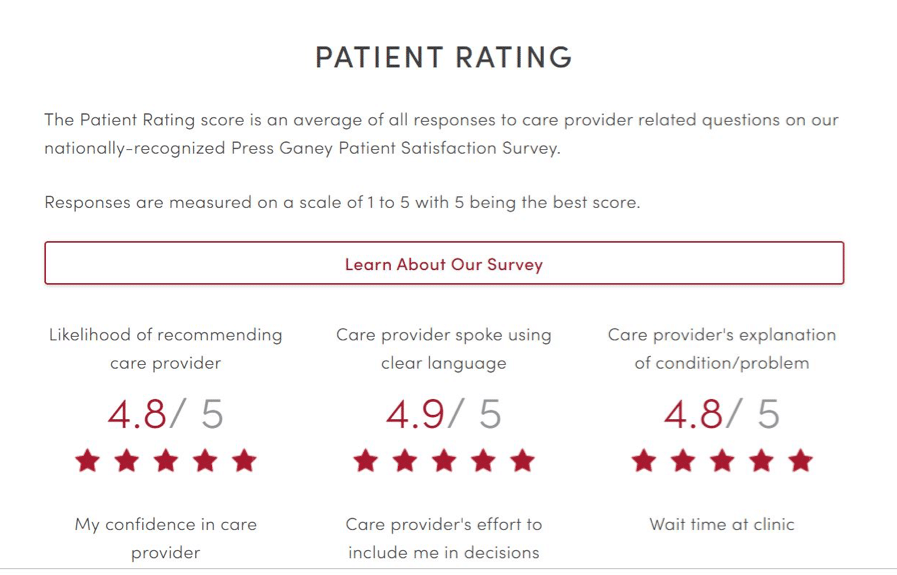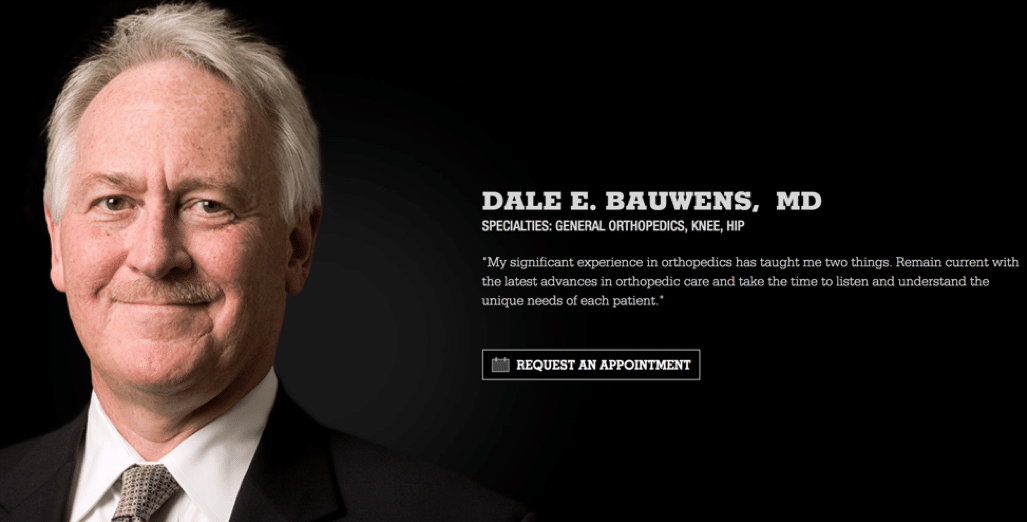![How to Write the Best Physician Profiles [RESEARCH]](https://ahamediagroup.com/wp-content/uploads/2021/02/physician-bio-research-blog.png)
Think beyond medical specialties and office locations: Your physician bios can be an integral part of your healthcare marketing strategy and even bring in new patients — if you do them right.
As a healthcare marketer, you should craft a smart and efficient physician bio strategy by figuring out what patients want.
Which is … what, exactly?
The Best Physician Profile, According to Patients
At Aha Media, we work with providers every day to write outstanding doctor profiles. We have a pretty good handle on what to write, but we knew it was time to dig deeper. We needed objective data that would tell us exactly what patients want to see from physician bios.
So, we pursued the challenge with a survey of 570 consumers — men and women between the ages of 18 to 70+. Below is our analysis on:
- Where consumers seek physician information
- What factors are most important to them when researching
The Results Will Surprise You (They Surprised Us!)
During our webinar on Oct. 24, 2019, we learned that three-quarters of attendees invest in writing/creating physician profiles. That’s a wise investment — because our survey results found that patients DO seek information about a physician before making an appointment. 75% of survey respondents said they read a doctor’s profile before scheduling.
75% of people read a doctor's profile before scheduling an appointment, & 70% of them are under age 71. #hcmktg Share on XBut where patients find physician information is another story:
- 27% of patients ask friends and family for recommendations
- 25% of patients find physicians on insurance carrier websites
- 22% of patients search online (i.e., Google)
- Only 6% of patients visit a hospital website directly to find information on a physician
- More men (11%) visit a hospital website to find a physician than women (4%)
Who is most likely to search your hospital website for a doctor depends on gender, age AND education, our research found.
Age
- People over age 71 are the least likely to read physician bios.
- But in the under 71 crowd, more than 70% said they’re likely to read physician bios before an appointment.
Education
Individuals with higher levels of education seem to rely on physician bios more than the less educated. Almost all education levels (less than a high school diploma through Doctorate) are at least 60% likely to read a physician bio before an appointment. But that likelihood increases to more than 80% for master’s degrees and more than 90% for doctorates.
The higher a person's level of education, the more likely they are to seek out physician profiles, says new research. #hcmktg Share on XGender
Women are more likely than men to seek out physician bios and make healthcare decisions on their own. Men are more likely to make those decisions in partnership with a loved one or spouse.
Use the Data to Create the Best Physician Profiles
Ready to take your physician profiles to the next level? Here’s the recipe for the best bios:
1. Highlight the doctor’s experience, education and accepted insurances
These are the three details people care about the most:
- Does this doctor have experience treating my condition? (Men care about this the most.)
- Does the doctor have a distinguished educational background and proper credentials?
- Does this doctor accept my insurance carrier? (Women value this the most.)
What DON’T patients really care about? Last on the list of preferences were the physician’s:
- Age
- Gender
- Hospital affiliation
How can you use this data? Potential patients care most about whether a doctor is qualified to care for their condition. So a physician bio should include:
- Links to articles they’ve published or been quoted in
- Awards they’ve received
Since patients want proof that a doctor knows what he/she is doing, display stats and facts prominently:
- # of times the physician has performed a certain procedure
- # of years the doctor has treated patients with a particular condition
Make insurance information easy-to-find from your physician bios:
- DO include the coverage info on each physician bio, or link to an overarching Insurance Coverage page for the facility.
- DON’T make users leave your hospital site (or waste time digging) to find what they’re looking for.
Example: Seattle Children’s
Example: Jefferson University Hospitals
2. Make the doctor bios as visual as possible.
50% of people seek out photos or videos of doctors before making an appointment. Women are more likely compared to men. But most of those visual-seekers are younger: Those over age 70 are half as likely to look for visuals compared to younger age groups.
Another trend we noticed? Higher education equates to a greater desire for photos and videos. People with a doctorate are more likely to seek out visuals compared to lower education levels.
Half of all consumers seek out photos or videos of docs before making an appt. & women are more likely compared to men. #contentcreation Share on XHow can you use this data? According to Doximity, people view doctors with profile photos twice as often as doctors without photos. Including a photo can help new patients put a face to a name and relieve anxiety before their first appointment. But because experience and education are also important to patients, present your doctor in a professional, credible manner.
Video is another great way to go beyond profile basics and let a doctor’s personality shine through. Digital Information World reports that 90% of consumers say videos help them make purchasing decisions.
Example: Stanford Health Care
Example: Dr. Carey Andrew-Jaja Magee-Womens Hospital of UPMC
Dr. Andrew-Jaja is known as the singing doctor for singing “Happy Birthday” to each baby he delivers. To honor his dedication to patient care, @CoreyOConnorPGH declared today to be Dr. Carey Andrew-Jaja Day in @CityPGH. pic.twitter.com/pGULNeD2PU
— UPMC (@UPMCnews) May 16, 2019
3. Use stories and quotes to show a doctor’s morals, values and sense of humor
Our research shows patients are more likely to make appointments with doctors who show similar morals and values through empathy. We asked, “Which factors would make you more likely to schedule an appointment?” The responses:
- 26% selected “sharing similar morals and values”
- 23% selected “having a sense of humor”
- 21% selected “understanding why they became a doctor”
44% of ages 70+ value a doctor who makes them laugh — double the amount of any other age group! So if your target audience is predominately seniors, shine a spotlight on your doctor’s funny side.
A doctor's morals/values, sense of humor, & reasons for becoming a physician are important to healthcare consumers. #hcmktg Share on XHow can you use this data? The best physician profiles use quotes and conversational language. Compare these two ways of getting across a message of expertise:
- Dr. John specializes in kidney stones. (SNOOZE)
- Include a quote: “I’ve treated over 1,000 patients with kidney stones. They can be painful, but we have several treatments available that can provide relief in a matter of hours.” (Wow, Dr. John sounds really empathetic and like he knows what he’s doing!)
Example: Firelands Physician Group
4. Patients’ opinions are influential. Use them to your advantage.
The opinions of others play a major role in how patients choose a doctor:
- 27% of patients rely on recommendations from loved ones.
- 93% (wow!) consider online reviews more than slightly important.
- 64% of respondents ages 18 to 34 said online reviews are “very” or “extremely important.”
How can you use this data? Patients appreciate transparency:
- Enable star ratings and reviews on your site.
- Give users the ability to see how your doctor’s ratings and reviews are compiled and published.
- Make sure to claim and complete doctor profiles on third-party review sites like Yelp and Healthgrades.
Example: University of Utah Health
5. Make every doctor profile findable.
Only 6% of patients visit a hospital website directly to find information on a physician. For the best physician profiles, make sure your providers have accurate information that shows up elsewhere. Remember that 22% of patients look online using a search engine like Google — your docs should show up for relevant searches there.
Only 6% of people go directly to a hospital website to find a physician. Most use search engines, referrals from loved ones, & insurance websites. #hcmktg Share on XHow can you use this data? Use keywords and follow all SEO best practices to make your bio findable.
- Focus on target keywords (and if any of your doctors have a strong reputation, consider using their name as a keyword).
- Write a unique title and meta description for each profile. (Yes, even for doctor pages!)
- Create a unique URL for each physician profile, preferably one with the doctor’s first and last name. (Not only is this ideal for search engines, it also makes it easier for patients to share the URL with loved ones.)
And ensure your “Find a Doctor” website tool is easy to find and use:
- Clearly label your physician directory “Find a Doctor” or “Find a Provider.”
- Allow searchers to find a doctor using general and medical terms interchangeably, such as “oncology” and “cancer.” Include the option to use advanced filtering options such as:
- Department
- Diagnoses
- Insurance
- Language
- Location
- Specialty
Example: Cleveland Clinic
6. Allow website visitors to schedule appointments using their preferred method.
Our data found that 50% of patients prefer to schedule appointments online, while the other half still prefers to call on the phone. Not shockingly, younger patients prefer online, and older patients prefer the phone.
How can you use this data? Give visitors the option to both call and schedule online.
- If initiating online scheduling is overwhelming, try piloting online scheduling functionality on profiles of physicians who treat younger patients (i.e., pediatricians, OB/GYNs, sports medicine doctors).
- Practitioners who typically treat older patients (think cardiologists, endocrinologists and internal medicine doctors) should always have a prominent phone number for scheduling.
Example: Midwest Orthopedic Specialty Hospital
To write the best physician profiles, you have to give patients what they want. But you don’t need to guess what that is! Our survey data can guide your strategy. Focus on what matters most to your audience: experience, education, insurance coverage, visuals, online reviews and the convenience of different ways to schedule.
Patients are searching for doctors online — make sure your providers are the ones they see.
Let’s Get to Work
Use our checklist and survey findings of 500+ patients as your physician bio template. Our A Step-By-Step Guide to Creating High-Converting Physician Bios comes with the executive summary of our research to help you turn your doctor profile pages into appointment-making machines.
